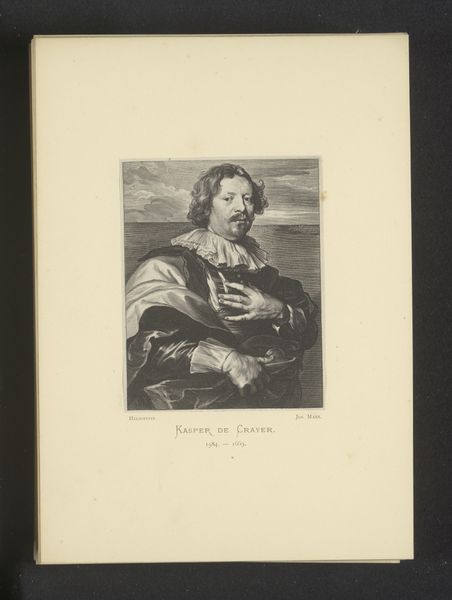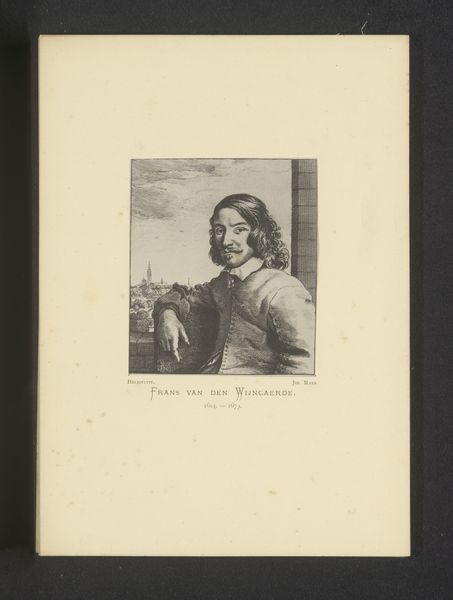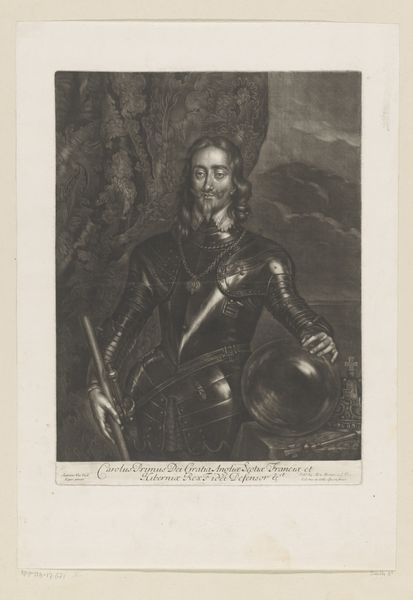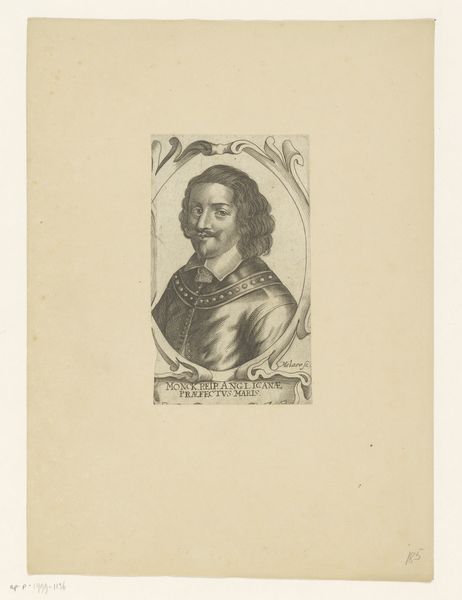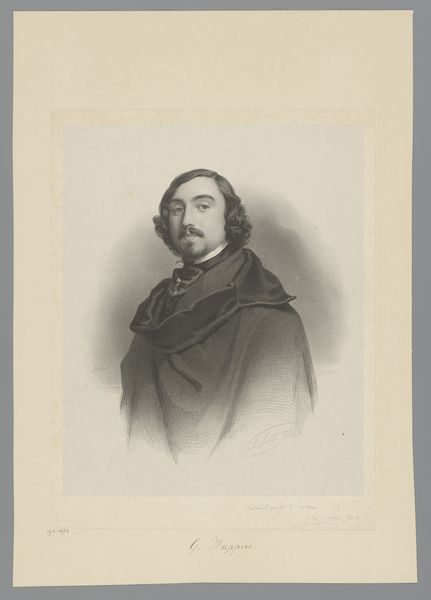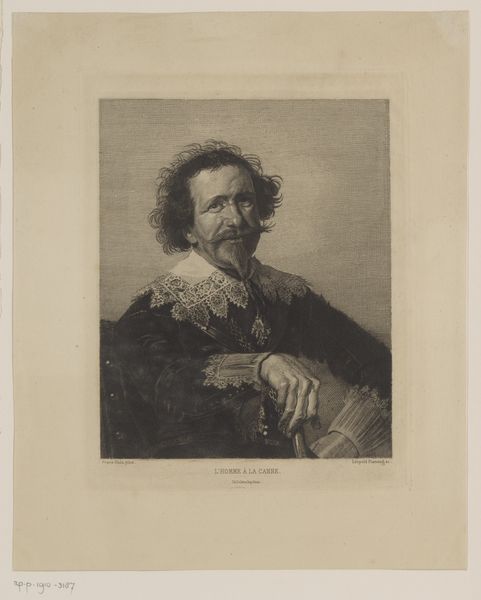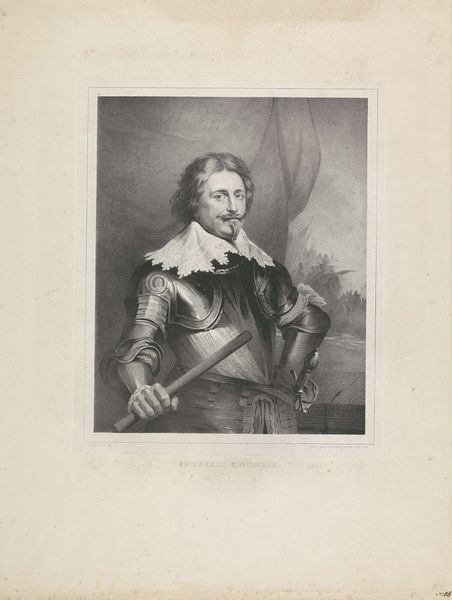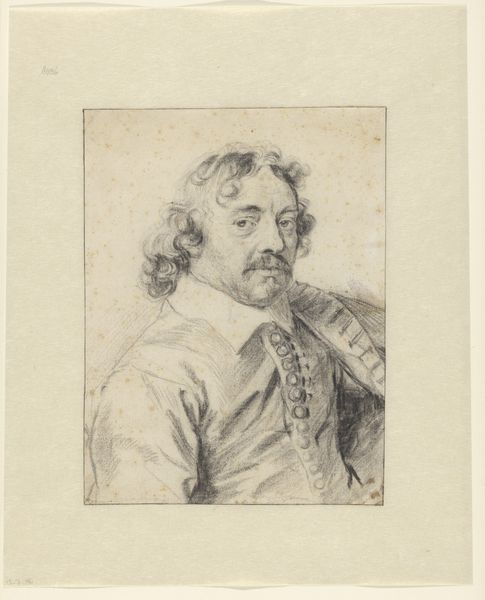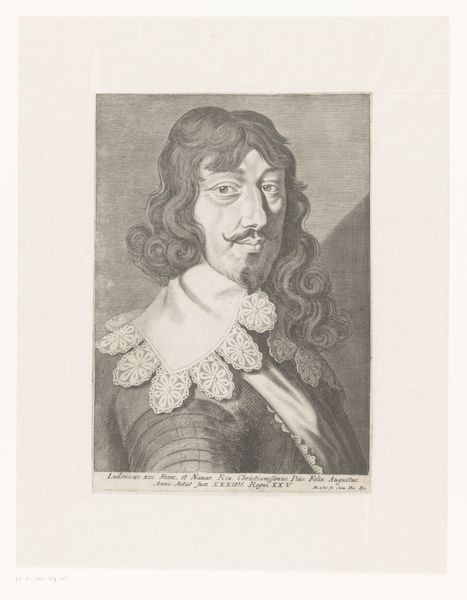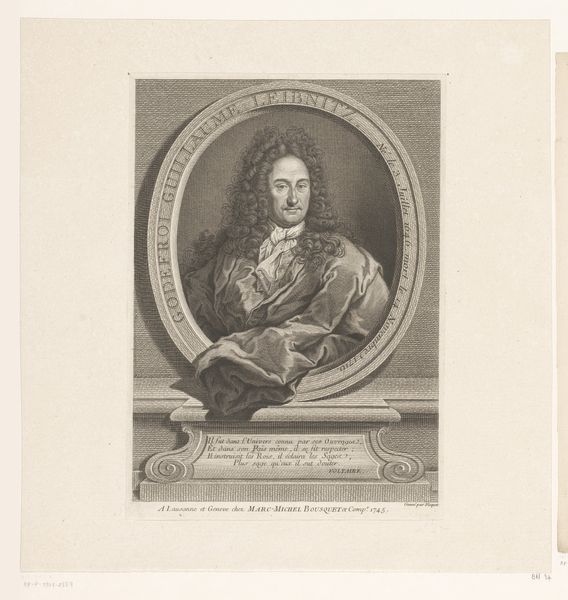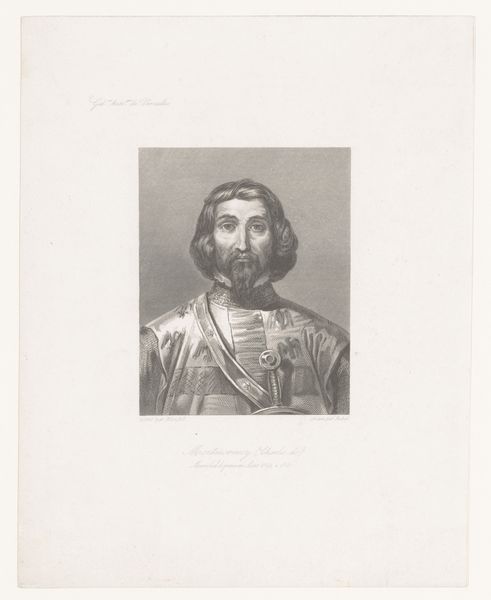
print, engraving
#
portrait
#
aged paper
#
baroque
# print
#
old engraving style
#
old-timey
#
history-painting
#
engraving
Dimensions: height 157 mm, width 120 mm
Copyright: Rijks Museum: Open Domain
This is Antoine de Marcenay de Ghuy's portrait of Charles I, King of England, made using etching. The method of etching is crucial here. Look closely, and you'll see that the image is constructed from a dense network of fine lines. The artist would have created this by coating a metal plate with wax, drawing into it with a needle to expose the metal, and then immersing the plate in acid. The acid bites into the metal, leaving behind incised lines that hold ink, and when pressed onto paper create a print. The etching process is tied to social status, as a way to reproduce images quickly and efficiently. It democratizes portraiture, bringing images of power to a wider audience. The meticulous work required highlights the labor involved in image-making, and the cultural significance of portraiture in shaping perceptions of authority. By understanding the materials and processes behind this print, we can appreciate how it challenges traditional boundaries between art, craft, and social communication.
Comments
No comments
Be the first to comment and join the conversation on the ultimate creative platform.
